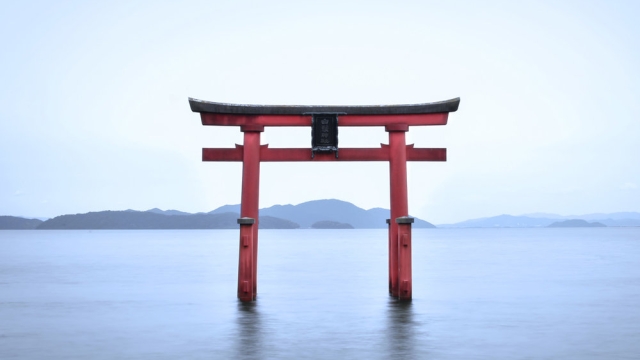
In the heart of Japan lies a rich tapestry of spirituality and ancient tradition, woven together by the serene presence of Shinto shrines. These sacred spaces, often nestled within lush forests or atop tranquil hills, offer a glimpse into the beliefs and practices that have shaped Japanese culture for centuries. As you wander through the towering torii gates and meticulously cared-for gardens, the whispers of the ancients seem to linger in the air, inviting you to explore the profound connection between humanity and the divine.
Shinto shrines in Japan are not just architectural wonders; they are vibrant centers of worship and community. Each shrine tells its own story, reflecting the unique history and local deities it honors. Visitors may find themselves captivated by the rituals and festivals that breathe life into these spaces, as well as the breathtaking natural beauty that envelops them. From the ethereal glow of lanterns during matsuri celebrations to the quiet contemplation of an early morning visit, the enchantment of Shinto shrines offers an experience that resonates deeply within the soul.
The Essence of Shinto Beliefs
Shinto, the indigenous spirituality of Japan, is deeply rooted in the appreciation of nature and the reverence for kami, the spirits or gods that inhabit the natural world. This belief system encompasses a profound respect for the environment, seeing it as filled with divine presence. Mountains, rivers, trees, and rocks are not just physical entities; they are considered sacred, each possibly housing a kami. This connection to nature creates a sense of harmony and balance, encouraging adherents to live in tune with their surroundings.
Another core aspect of Shinto beliefs is the concept of purification and renewal. Purification rituals, known as "harae," play a crucial role in Shinto practice, serving to cleanse impurities and restore spiritual health. These rituals emphasize the importance of maintaining a pure heart and a clear mind, allowing individuals to connect with the kami through offerings and prayers. Such practices foster a deep awareness of personal and communal responsibility, reminding worshippers of their role in sustaining the balance between humanity and the divine.
Lastly, Shinto does not have a centralized doctrine or a system of absolute truths, which allows for a diverse interpretation of beliefs and practices. Festivals, or "matsuri," are essential expressions of Shinto, celebrating seasonal changes, agricultural cycles, and historical events. These gatherings strengthen community bonds and reaffirm the collective identity of worshippers, illustrating how Shinto is interwoven with the cultural fabric of Japan. Through these vibrant expressions, the essence of Shinto beliefs thrives, emphasizing the continual dialogue between the human and spiritual realms.
Architectural Marvels: Shrine Design
Shinto shrines in Japan exhibit a unique architectural style that reflects the harmony between nature and human creativity. These structures are often built using natural materials such as wood, which allows the shrines to blend seamlessly with their forested surroundings. The elegant simplicity of their design, characterized by clean lines and open spaces, creates an inviting atmosphere that encourages visitors to connect with the spiritual essence of the site. Each shrine is often surrounded by lush greenery, enhancing the feeling of tranquility and reverence.
The torii gate is perhaps the most iconic feature of Shinto shrines, serving as the symbolic threshold between the sacred and the profane. With its distinct post-and-lintel structure, the torii can vary in size, color, and design, but all share the same purpose: to signify the entrance to a sacred space. This gateway invites visitors to leave behind the chaos of everyday life and step into a realm of spirituality and peace. As one passes through a torii, the transformation into a sacred space begins, setting the tone for reflection and respect.
Shrines often feature a central hall, known as the honden, where the deity enshrined is worshipped. The design of the honden is intended to evoke feelings of awe and respect, and its construction can include intricate carvings and ornamental details that tell stories of mythology and spirituality. Each aspect of the shrine’s design, from the subtly sloping roofs to the carefully chosen colors, plays a significant role in conveying the reverence attributed to the kami, or spirits, that inhabit the space. This meticulous attention to architectural detail enriches the experience for those who visit, creating a lasting connection to Japan’s cultural heritage.
神社 有名
Cultural Significance and Rituals
Shinto shrines in Japan are not only places of worship but also serve as vital cultural landmarks that embody the history and traditions of the Japanese people. They are often situated in serene natural settings, reflecting the Shinto belief in the sacredness of nature. The architectural styles, which vary from region to region, showcase the local craftsmanship and adapt to the surrounding environment, further emphasizing the importance of harmony with nature in Shinto practices. Such shrines are imbued with a sense of communal identity, where local customs and celebrations are intertwined with the rhythms of the seasons.
Rituals at Shinto shrines are fundamental to reinforcing community bonds and maintaining spiritual well-being. Annual festivals, known as matsuri, take place to honor the kami, or spirits, enshrined there. These events often involve traditional music, dance, and food, attracting visitors from far and wide. During these festivals, participants engage in various rituals, including purification rites and offerings, which are believed to ensure blessings and protection from the kami. The vibrant atmosphere of these celebrations reflects the deep-rooted connection between the people and their spiritual heritage.
The daily activities at Shinto shrines also contribute to their cultural significance, as they provide opportunities for personal reflection and connection to the divine. Visitors partake in simple rituals like washing their hands at the temizuya, making offerings, and ringing the bell at the main hall before worshiping. These practices promote mindfulness and gratitude, emphasizing notions of purity and respect. The continual ritual activity at Shinto shrines fosters a living tradition that not only connects individuals with their ancestors but also instills a sense of peace and continuity in an ever-changing world.
Visiting the Sacred: A Traveler’s Guide
Exploring Shinto shrines in Japan offers a unique glimpse into the nation’s spiritual heritage and cultural practices. To make the most of your visit, it’s important to approach these sacred sites with a sense of respect and curiosity. Each shrine is not only a place of worship but also a reflection of the natural beauty that surrounds it. Look out for the iconic torii gates that mark the entrance, as they symbolize the transition from the mundane to the sacred.
When visiting, consider timing your trip to avoid the crowds. Early mornings or weekdays tend to be quieter. Participating in traditional practices, such as washing your hands at the temizuya (purification fountain) and bowing before the shrine, helps you connect more deeply with the experience. Many shrines also host seasonal festivals, which can enrich your visit with vibrant cultural celebrations, including traditional music, dances, and food stalls.
Lastly, be mindful of the local customs and etiquette. Dress modestly and maintain a respectful demeanor. Photography is often allowed, but always check for signs indicating restrictions, particularly in areas of worship. As you wander through the tranquil paths among ancient trees and stone lanterns, take time to reflect and appreciate the spiritual ambiance that Shinto shrines in Japan uniquely offer. Each visit is a chance to connect with the whispers of the ancients and the timeless essence of Japanese culture.



